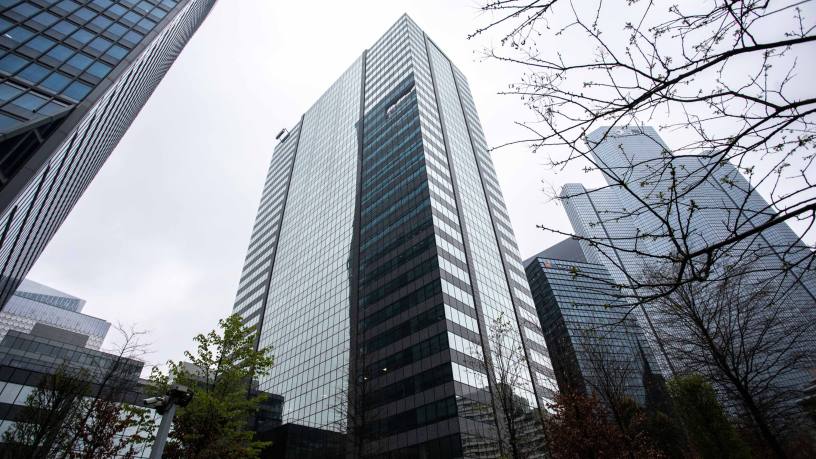Banks are becoming increasingly interconnected with non-bank financial institutions, but to what extent is unclear.
While data on interconnectedness between banks and NBFIs has improved over the past few years, it remains challenging to obtain a comprehensive picture of the exposure, says Jean-Paul Servais, chair of the International Organization of Securities Commissions.
This is a huge risk, as any turmoil in the NBFI sector is expected to disproportionately impact banks, admitted the European Central Bank in its May 2023 Financial Stability Review.
Based on an indicative analysis, EU banks’ direct exposures towards NBFIs accounts for around 7 per cent of their total assets, wrote the European Banking Authority in its December risk assessment report.
Much less is known about indirect exposures, admitted EBA chair José Manuel Campa in an interview with the Financial Times in January. “The first step in this situation is always getting information; it’s an obscure sector where the quality of data is not homogenous,” he said.
“We are of course keen to explore these data challenges, which is why we are actively engaged in Financial Stability Board workstreams on the matter,” says Servais.
Most of the data available is aggregate data, while what is missing is granular data on individual institutions’ exposures. “And that’s what you really need for financial supervision purposes,” says Richard Portes, professor of economics at London Business School.
“From my conversations with supervisors I don’t have the impression that these interconnections are sufficiently well documented,” says Christian M. Stiefmüller, senior adviser on bank regulation and financial stability at non-profit Finance Watch.
The data challenge
There are many ways in which banks and NBFIs can be interconnected, which can lead to contagion risk.
Linkages can occur through different types of transactions, such as borrowing and derivatives transactions, on or off the balance sheet, with off-balance sheet transactions particularly difficult to obtain, explains Servais.
Banks and non-banks could have investment portfolios that have similar compositions and therefore be prone to similar shocks. Lenders may be extending credit lines to non-banks that could be drawn by the latter in times of stress, exposing banks to risk. Some banks may be more dependent than others on short-term funding from non-banks.
Transatlantic differences
The interconnection between banks and the NBFI sector varies between the US and Europe. “Taking insurance companies as an example [which are the among the biggest NBFIs], in Europe insurance companies are the top investors — up to 50 per cent — of the banks’ long-term funding,” says Farzad Saidi, professor at the University of Bonn.
This exposure can have unintended consequences. “We are telling banks to not rely as much on flighty deposit funding, but instead try to get more long-term funding. Inadvertently, this will lead to a greater dependency on insurance companies for the long-term funding,” explains Saidi.
In the US, insurance companies and banks are connected via investment in the same asset class, such as mortgage-backed securities. “If a bunch of insurance companies sell certain assets, this generates a price effect on everybody else holding the same asset classes, such as banks. That’s why we care about this asset overlap,” adds Saidi, highlighting the impact of this price influence on banks’ balance sheets.
Therefore, according to Saidi, asset challenges are more prevalent in the US, while in Europe the problem is more on the liabilities side.
“The great majority of asset managers in Europe are owned by banks, which is not the case in the US. And there are risks arising from that,” says Portes, who underlines how this interdependence can create reputational risk for the banks.
The first sign of the global financial crisis was BNP Paribas having to close down three of the funds it managed. “They were off-balance sheet but there was a big reputational risk involved and that was a sign that there were some bad things going on out there,” recalls Portes.
Regulation so far and what’s next
When it comes to NBFIs, regulators have typically focused on liquidity mismatch and leverage as two key sources of potential contagion.
“We have conducted a lot of work on liquidity risks, culminating in our policy measures around liquidity risks for open-ended funds and, to an extent, our work in collaboration with the Committee on Payments and Market Infrastructures on margins. We are now focusing our attention on leverage,” says Servais.
Leverage amplifies the potential for losses and contagion, as small disruptions or losses in one part of the financial system can quickly spread and magnify across interconnected institutions. “The market stress associated with Archegos demonstrated that a single entity can develop risky leveraged trading positions, which can create financial instability,” says Servais.
“I think we need not just liquidity regulation, but also regulation on leverage. We have no constraints on leverage of [NBFIs],” says Portes.
Regulators are currently assessing the build-up of risk of shadow banking entities, envisaging tighter limits on exposure towards these entities, explains EBA policy expert Davide Vioto.
The EU’s amended capital requirements regulation, planned to enter into force in January 2025, mandates the EBA to update the guidelines on limits on shadow bank exposure. Furthermore, the EBA is also mandated to submit a report to the European Commission on banks’ exposure to shadow banking entities. The report shall include an assessment of the appropriateness of aggregate limits or tighter individual limits in the sector.
In the aftermath of the great financial crisis, the macroprudential policy frameworks had to acknowledge that banks’ actions could affect other firms. “Now the next step is incorporating non-banks in that,” says Saidi. But this is complicated, because while banks must post capital against their assets, the same is not required of shadow banks.
“If a mortgage loan is securitised in a residential mortgage-backed security, and then sold off to a shadow bank, it’s the shadow bank that should post capital against it, not the bank. The first step is to know who the ultimate holder of these assets is. That is the challenge that they will have to take on,” adds Saidi.
Ultimately, “if [insurance companies] invest in similar assets, and behave like banks, why don’t we regulate them?” asks Saidi. “I think this has been brought up in policy circles: whether we should streamline more regulation of banks and insurance companies.”








